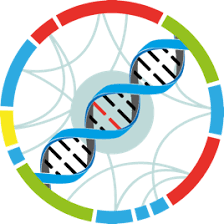Study : Cellulose perturbation has broad impacts on resource allocation in Arabidopsis thaliana putatively mediated by glycine rich peptides
Identification
Name
Cellulose perturbation has broad impacts on resource allocation in Arabidopsis thaliana putatively mediated by glycine rich peptides
Identifier
dXJuOkVWQS9zdHVkeS9QUkpOQTQzMTQ0Mw==
Description
The interplay between plant chemistry and architecture was investigated using a pharmacological approach combined with mutant analysis. Due to the high abundance and essential role of cellulose in plant development and function, it was hypothesized that perturbation of cellulose biosynthesis would have far-reaching effects on plant chemistry and resource allocation. The impact of cellulose disruption was studied through comprehensive multiphase-NMR (CMP-NMR) using the Arabidopsis thaliana cellulose synthase mutant ectopic lignification1 (eli1). CMP-NMR confirmed several known metabolic impacts of cellulose disruption including increased lignification, increased starch production, and a shift from crystalline to amorphous cellulose. It also revealed unexpected metabolic impacts such as increased methanol production, increased seed-derived lipid content, and the presence of the peptide pentaglycine, which had not been previously observed in plants. It was further hypothesized that the metabolic impacts of cellulose disruption are mediated by one or more signal molecules that would be elevated in cellulose synthase mutants such as eli1. The presence of one or more signal molecules in eli1 that induce a lignification response was confirmed by exposing wild-type seedlings to ground tissue from eli1. Treatment of wild-type seedlings with pentaglycine suggested that the peptide may be at least partially responsible for mediating this response. A case is made for glycine rich proteins (GRPs) as the source of pentaglycine in vivo, and for wall associated kinases (WAKs) as receptors that trigger either developmental or defence responses through differential binding of intact GRPs and oligoglycine peptides. Overall design: Examination of two different genotypes (wild type and eli1) in the absence and presence of glucose, with two biological replicates
Genotype
| Accession number | Name | Taxon |
|---|
